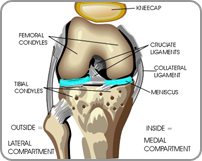If the surgery is scheduled for the morning, be ready after brushing your teeth. You will taken to the operation theatre at the time which will be informed the previous night.
If your surgery is scheduled for afternoon, you may be allowed tea/coffee and light breakfast early morning of the operation day.
While being taken to the operation theatre, please remember:
- To remove your denture
- To remove contact lenses.
- To remove spectacles.
- Not to carry cash or valuables.
 Some medicines may be required to be taken by mouth on the morning of surgery with few sips of water and some injections may be administered prior to you being taken to the operation theatre. Some medicines may be required to be taken by mouth on the morning of surgery with few sips of water and some injections may be administered prior to you being taken to the operation theatre.
At the appointed time, you will be taken to the operation theatre. Here the anesthetist would put you to various monitors and check-up your heart, oxygen saturation and blood pressure. Before starting the anaesthesia, an intravenous line in the forearm will be taken to administer various medications. As discussed previously you will be administered the anaesthesia most suitable for you. If it is going to be epidural anaesthesia, you will be made to sit and your lower back will the cleansed with an antiseptic solution. Then after numbing your skin, a thin tube will be inserted in your back with the help of a special needle.
Once you are anaesthetised, a catheter may be put to ease passing urine. The actual preparation for the operation will start which will include thorough cleansing of the leg and applying the tourniquet at the root of your leg. Your leg will be cleaned once more with antiseptic solution and it will be covered with sterile drapes.
The actual surgery consists of entering the knee joint through an incision in front of the knee. The irregular cartilage of at the ends the thighbone, leg bone and the kneecap will be shaved by a power saw to the extent of 8-10 mm and the artificial parts will be fitted on the shaved bones with the help of substance called bone cement. During the surgery, the tension in the knee ligament will be adjusted so that the deformity present before the surgery will disappear completely. At the end of the surgery, the knee will be thoroughly washed with antiseptic solution and a thin plastic tube will be inserted in the joint to drain out the blood, which is likely to ooze during first 48 hours. After meticulously stitching up of the wound, a bulky compression dressing will be applied.
 After some period of observation in the theatre complex, you will be shifted back to your room. After some period of observation in the theatre complex, you will be shifted back to your room.
If the surgery is carried out under epidural anaesthesia, you will be allowed to take oral fluids within 2-4 hours after being brought to the room. On the day of surgery, you will continue to receive IV fluids.
For pain relief, the epidural tube will be connected to a computerised infusion pump, through which you will receive continuous dose of pain relieving medications. From time-to-time you will administered injections and oral medications as per the doctors' instructions. If you have difficulty of any kind, please do not hesitate to call a nurse or a doctor. They will be always available to help you.
Some of the patients may require administration of oxygen for first 24 hours, while some patients may require monitoring in intensive care unit.
|
